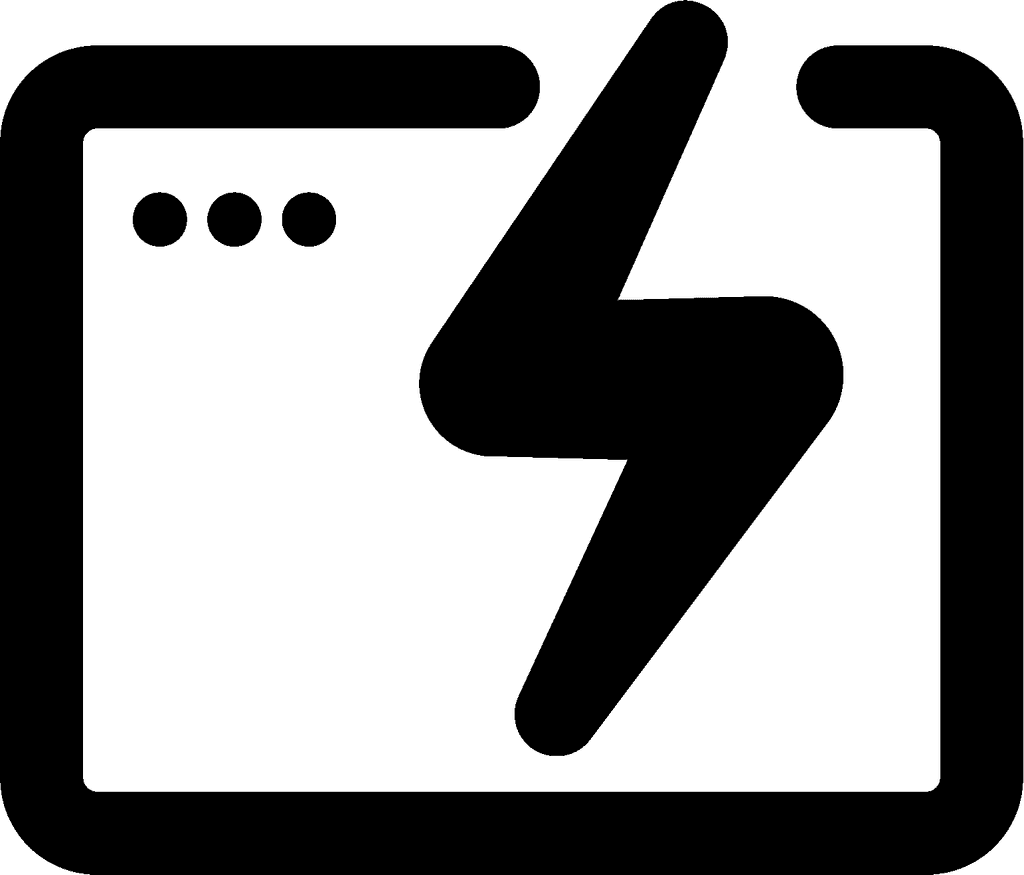IT Helpdesk Chatbot: Streamlining Support for Improved Efficiency
IT helpdesk chatbots are revolutionizing customer support in the technology industry. These AI-powered virtual assistants use natural language processing to understand and respond to user queries, providing quick and accurate solutions to common IT issues. By leveraging artificial intelligence, IT helpdesk chatbots can handle multiple inquiries simultaneously, reducing wait times and improving overall user satisfaction.
Organizations implementing these chatbots benefit from increased efficiency and cost savings. The chatbots can handle routine tasks, freeing up human agents to focus on more complex problems. This allows IT departments to allocate their resources more effectively, ultimately enhancing the quality of support provided to end-users.
As AI technology continues to advance, IT helpdesk chatbots are becoming increasingly sophisticated. They can learn from past interactions, adapt to new situations, and provide personalized responses based on user preferences and history. This ongoing improvement ensures that chatbots remain a valuable asset in the ever-evolving landscape of IT support.

Understanding IT Helpdesk Chatbots
IT helpdesk chatbots leverage artificial intelligence to provide efficient support for tech-related issues. These AI-powered tools use natural language processing to interact with users and resolve problems quickly.
Defining AI in Helpdesk Environments
AI chatbots in IT helpdesk environments are software programs designed to simulate human-like conversations. They use machine learning algorithms to understand user queries and provide relevant solutions. These chatbots can handle multiple conversations simultaneously, offering 24/7 support.
AI technology enables these chatbots to learn from past interactions, improving their responses over time. They can access knowledge bases and ticketing systems to retrieve information and update records automatically.
Role of Natural Language Processing
Natural Language Processing (NLP) is a crucial component of IT helpdesk chatbots. It allows the AI to understand and interpret human language in its various forms.
NLP enables chatbots to:
Analyze user intent
Extract key information from queries
Generate coherent and contextually appropriate responses
Advanced NLP techniques help chatbots handle complex technical jargon and industry-specific terminology. This capability ensures accurate communication between users and the AI system.
Benefits to Customer and Employee Experience
IT helpdesk chatbots significantly enhance both customer and employee experiences. For customers, they provide instant responses to common issues, reducing wait times and frustration.
Chatbots offer:
24/7 availability
Consistent support quality
Quick resolution for simple problems
Employees benefit from reduced workload, as chatbots handle routine queries. This allows IT staff to focus on more complex issues that require human expertise.
AI chatbots also improve scalability, enabling organizations to handle increased support volumes without proportionally increasing staff. This leads to cost savings and improved operational efficiency.
Streamlining Support with Automation
IT helpdesk chatbots leverage automation to transform support processes. This technology enhances efficiency, integrates seamlessly with existing systems, and utilizes robotic process automation (RPA) for improved control.
Automating Repetitive Tasks
Chatbots excel at handling routine inquiries and tasks. They can reset passwords, provide basic troubleshooting steps, and answer frequently asked questions without human intervention. This automation frees up human agents to focus on more complex issues.
Chatbots can also automatically categorize and prioritize tickets based on predefined criteria. This ensures urgent matters receive prompt attention while routine requests are handled efficiently.
Some advanced chatbots even use machine learning to improve their responses over time. They analyze past interactions to refine their knowledge base and provide more accurate solutions.
Improving Efficiency and Workflow
Automation streamlines support workflows significantly. Chatbots can instantly access relevant information from knowledge bases and ticketing systems. This rapid retrieval of data allows for quicker problem resolution.
Automated ticket routing ensures issues reach the right department or specialist immediately. This reduces transfer times and improves first-contact resolution rates.
Chatbots also facilitate 24/7 support without the need for round-the-clock staffing. Users can get help at any time, enhancing satisfaction and reducing ticket backlogs.
Integration with Existing Systems
Modern IT helpdesk chatbots integrate seamlessly with various enterprise systems. They can connect to:
Ticketing systems
Knowledge bases
Asset management tools
Monitoring systems
This integration allows chatbots to pull real-time data and provide up-to-date information to users. They can check system statuses, retrieve asset details, and update tickets automatically.
Some chatbots also integrate with communication platforms like Slack or Microsoft Teams. This enables users to get support through their preferred channels.
Using RPA for Enhanced Control
Robotic Process Automation (RPA) takes chatbot capabilities to the next level. RPA bots can perform complex, multi-step tasks across different systems.
For example, an RPA-enhanced chatbot could:
Receive a new employee onboarding request
Set up required permissions
Generate and send welcome emails
RPA also allows for better auditing and compliance. Every action taken by the bot is logged, providing a clear trail for review and analysis.
By combining chatbots with RPA, IT departments can automate entire processes end-to-end. This reduces errors, improves consistency, and further enhances efficiency.
Enhancing Helpdesk Capacity and Availability
IT helpdesk chatbots significantly boost support capabilities through expanded hours, efficient ticket handling, and proactive assistance. These improvements lead to faster resolution times and increased customer satisfaction.
Expanding Service Hours to 24/7
Chatbots enable round-the-clock support without the need for human agents to work overnight shifts. This 24/7 availability ensures users can get help at any time, regardless of time zones or work schedules.
Automated responses handle common inquiries instantly, reducing wait times for urgent issues. For complex problems, chatbots can create tickets and schedule follow-ups with human agents during business hours.
Constant availability also helps global organizations support employees and customers across different regions. This expanded service window improves user experience and productivity by addressing IT issues promptly.
Managing High Volume of Tickets
Chatbots excel at handling large numbers of support requests simultaneously. They can quickly categorize and prioritize tickets based on urgency and complexity.
By automating responses to frequently asked questions, chatbots deflect a significant portion of simple tickets. This frees up human agents to focus on more complex issues that require their expertise.
Key benefits of chatbot ticket management:
Instant responses to common queries
Efficient routing of complex issues
Reduced queue times for users
Improved workload distribution for human agents
Proactive Support Features
Modern helpdesk chatbots offer proactive support to prevent issues before they occur. They analyze patterns in user behavior and system data to identify potential problems.
Chatbots can send automated alerts about system updates, planned maintenance, or detected anomalies. This keeps users informed and reduces the likelihood of unexpected disruptions.
Proactive features may include:
Personalized tips for optimizing software usage
Reminders for regular system maintenance tasks
Notifications about security patches and updates
By addressing potential issues early, chatbots help minimize downtime and improve overall IT infrastructure stability.
Optimizing User Interactions
Effective IT helpdesk chatbots enhance user experiences through thoughtful design, language support, and personalization. These elements work together to create seamless interactions and efficient problem-solving.
Crafting a User-Friendly Experience
User-friendly chatbots employ conversational AI to create natural, intuitive dialogues. They use clear language and avoid technical jargon when communicating with users. The interface should be clean and easy to navigate, with prominent options for common issues.
Chatbots can offer quick-select buttons for frequent problems, reducing typing and speeding up resolution times. They should also provide easy ways to escalate to human support when needed.
Effective chatbots learn from interactions, continuously improving their responses and suggestions based on user feedback and common queries.
Implementing Multilingual Support
Multilingual support expands the reach and effectiveness of IT helpdesk chatbots. This feature allows users to interact in their preferred language, reducing miscommunication and frustration.
Chatbots can be programmed to detect the user's language automatically or offer language selection options. They should maintain consistent terminology across languages to ensure clarity.
Natural Language Processing (NLP) technologies enable chatbots to understand context and nuances in different languages, providing more accurate and helpful responses.
Regular updates to language models and translations keep the chatbot's communication current and relevant across all supported languages.
Personalizing Customer Interactions
Personalized interactions make users feel valued and understood. Chatbots can leverage user data to tailor their responses and suggestions based on previous interactions, job roles, or common issues within specific departments.
They can greet users by name and reference past conversations or known preferences. This approach helps build rapport and streamlines the problem-solving process.
Chatbots can also offer proactive suggestions based on user history or current system status, anticipating needs before they arise. This predictive support enhances user satisfaction and efficiency.
Personalization should balance helpfulness with privacy, ensuring user data is handled securely and ethically.
Measuring Success and Continuous Improvement
Effective IT helpdesk chatbots require ongoing evaluation and refinement. Key metrics and best practices help optimize performance, while regular updates ensure the chatbot stays current with evolving support needs.
Analyzing Helpdesk Data
Data analysis provides crucial insights into chatbot effectiveness. Key performance indicators include:
Resolution rate
Average handling time
User satisfaction scores
Escalation frequency
Regular reports highlight areas for improvement. Tracking trends over time reveals the impact of changes and updates.
IT teams can use analytics dashboards to visualize data. These tools make it easy to spot patterns and anomalies. Natural language processing helps categorize common issues and user intents.
Sentiment analysis gauges user reactions to chatbot interactions. This feedback drives continuous improvements to the conversational flow.
Adopting Best Practices for IT Support Chatbots
Implementation of industry best practices enhances chatbot performance. Clear communication is essential. Chatbots should use simple language and avoid technical jargon.
Personalization improves user experience. Chatbots can tailor responses based on user history and preferences.
Quick issue escalation to human agents prevents user frustration. Chatbots need clear criteria for when to transfer conversations.
Integration with knowledge bases keeps information current. Regular content audits ensure accuracy and relevance.
Multilingual support broadens the chatbot's reach. Natural language understanding capabilities allow seamless communication across languages.
Regular Training and Updates
Ongoing training keeps IT support chatbots up-to-date. New product releases and policy changes require prompt updates to the chatbot's knowledge base.
Machine learning models benefit from periodic retraining. This process incorporates new data to improve response accuracy.
User feedback helps identify areas for enhancement. IT teams can use this input to refine conversational flows and add new features.
Testing in controlled environments ensures smooth deployment of updates. A/B testing compares different versions to optimize performance.
Human oversight remains crucial. IT staff should regularly review chatbot interactions to identify improvement opportunities.
Frequently Asked Questions
AI helpdesk chatbots offer numerous benefits for IT support and customer service. They provide efficient solutions, integrate with existing systems, and handle complex queries.
How does an AI helpdesk chatbot improve customer service efficiency?
AI helpdesk chatbots respond instantly to user inquiries, eliminating wait times. They can handle multiple conversations simultaneously, reducing bottlenecks during peak periods.
These chatbots provide consistent answers to common questions, ensuring accuracy and reliability. They also operate 24/7, offering support outside of regular business hours.
What are some common features of a helpdesk chatbot?
Natural language processing allows chatbots to understand user queries in conversational language. Machine learning capabilities enable them to improve their responses over time.
Many chatbots offer multi-language support, expanding their reach to a global audience. They often include sentiment analysis to detect user frustration and escalate issues when necessary.
Can a chatbot be integrated with existing helpdesk ticketing systems?
Yes, most AI helpdesk chatbots can integrate seamlessly with existing ticketing systems. This integration allows for automatic ticket creation and updating based on chat interactions.
Chatbots can access ticket history and user information, providing context-aware support. They can also prioritize and route tickets to appropriate human agents when needed.
What are the benefits of using a chatbot for IT support?
Chatbots reduce the workload on human agents by handling routine inquiries. This allows IT staff to focus on more complex issues, improving overall productivity.
They provide instant access to a vast knowledge base, offering quick solutions to common problems. Chatbots also collect valuable data on user issues, helping organizations identify trends and improve their services.
How can a helpdesk chatbot handle complex customer queries?
Advanced chatbots use decision trees and contextual understanding to navigate complex queries. They can ask clarifying questions to gather more information and provide targeted solutions.
When faced with issues beyond their capabilities, chatbots can seamlessly transfer the conversation to a human agent. They provide the agent with a transcript of the interaction for continuity.
What is the process of setting up a helpdesk chatbot?
The setup begins with defining the chatbot's scope and objectives. This involves identifying common user queries and creating a knowledge base of responses.
Next, the chatbot is trained using historical data and simulated conversations. It undergoes rigorous testing to ensure accuracy and effectiveness before deployment.
Integration with existing systems follows, along with staff training on how to manage and update the chatbot. Regular monitoring and refinement are crucial for maintaining optimal performance.

Build a more powerful help desk with Risotto
Minimize Tickets and Maximize Efficiency
Simplify IAM and Strengthen Security
Transform Slack into a help desk for every department
Schedule your free demo



